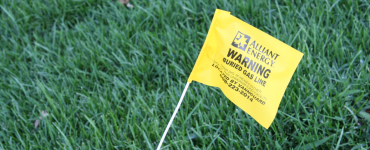Be prepared for bad weather
Assemble a storm emergency kit
The best way to weather a storm is to have a safety plan and supplies in place ahead of time. Keep an emergency safety kit handy, and make sure everyone in the family knows where it's located. Your kit should include:
- A battery-operated flashlight, clock and radio.
- One or two packages of batteries.
- A first aid kit and manual.
- A small fire extinguisher.
- If you have room, add a few pillows and blankets.
- If you have young children, keep a stash of "rainy-day" books and games in your emergency kit to keep them calm and occupied during a storm or power outage.
- Don't forget to post emergency numbers near the phone, and keep a copy in your emergency kit as well.
Food and water
If you know a big storm is approaching, gather up other necessities like medications and baby supplies, as well as food items that don't require cooking or refrigeration (granola bars or crackers and peanut butter, for example).
Don't forget the drinking water - the American Red Cross recommends reserving about three gallons per person.
Garage door openers
A garage door opener won't work during an outage. Make sure you know how to operate your garage door manually in case your car is inside when the power goes out, and keep a spare house key handy.
Surge protectors
Surge protectors are a great investment to protect your electronics and appliances. A lightning strike or downed power line can send a damaging surge of electricity through your home.
Learn more about surge protectors
Fireplaces
A wood-burning fireplace is a great way to keep warm during a winter power outage, but it's important to keep it in good working order.
Clean out the firebox often, make sure the damper operates correctly, and have the chimney cleaned and inspected by a professional on a regular basis.
Learn more about fireplace maintenance
Utility shut-offs
It's also a good idea to know how to shut off the power to your house using the main fuse or breaker at the service panel, and how to shut off water and gas supply lines.
If a severe storm hits, your local disaster officials may instruct you to shut off the utilities to avoid further damage or injuries.
Prolonged outages
Staying warm
The most important rule is never try to heat a room with a gas stove or oven. Using a natural gas, propane or oil-fired appliance improperly can deplete oxygen from a room, causing asphyxiation, or produce deadly carbon monoxide fumes.
Both of these deadly circumstances can occur suddenly, with few or no warning signs or symptoms. Instead, layer yourself with extra sweaters, socks and blankets.
If you use a wood-burning fireplace , crack open a window on the opposite side of the room to allow for adequate air circulation. Operating a fireplace in an enclosed room could also cause carbon monoxide problems.
Keeping food safe
Avoid opening the refrigerator or freezer door - every time the door is opened, up to 30 percent of the cold air can escape. Refrigerated food will stay cold up to six hours; frozen food will keep for about two days if the door is not opened.
If the outage is prolonged, pack refrigerated items in a Styrofoam or insulated cooler surrounded by ice.
When the power comes back on, use a thermometer to check the internal temperature of the food - if it's less than 40 degrees, it's safe to keep. If frozen foods still have ice crystals, they can safely be refrozen.
More from this category
Natural gas leaks
Although leaks from natural gas lines are rare, it’s important to know the warning signs.
Radon gas
Gas appliance safety
Keep these safety guidelines in mind when using gas-consuming products such as stoves, clothes dryers, water heaters and furnaces.
Flood safety
Walking through a wet or flooded basement can be dangerous. To be safe, you should always assume that basement flood water is energized.
Staying safe around buried gas pipelines
If you have buried natural gas lines on your property, make sure you know how to locate and maintain them.
Electrical safety and childproofing
Make sure your electrical appliances, tools and outlets are safe, and be careful around electrical equipment outdoors.
Home security systems
Many homeowners are investing in home security systems to deter criminals, provide home protection and deliver peace of mind.
Wiring and grounding in older homes
The wiring inside most older houses wasn’t designed to handle the electrical needs we have today.









